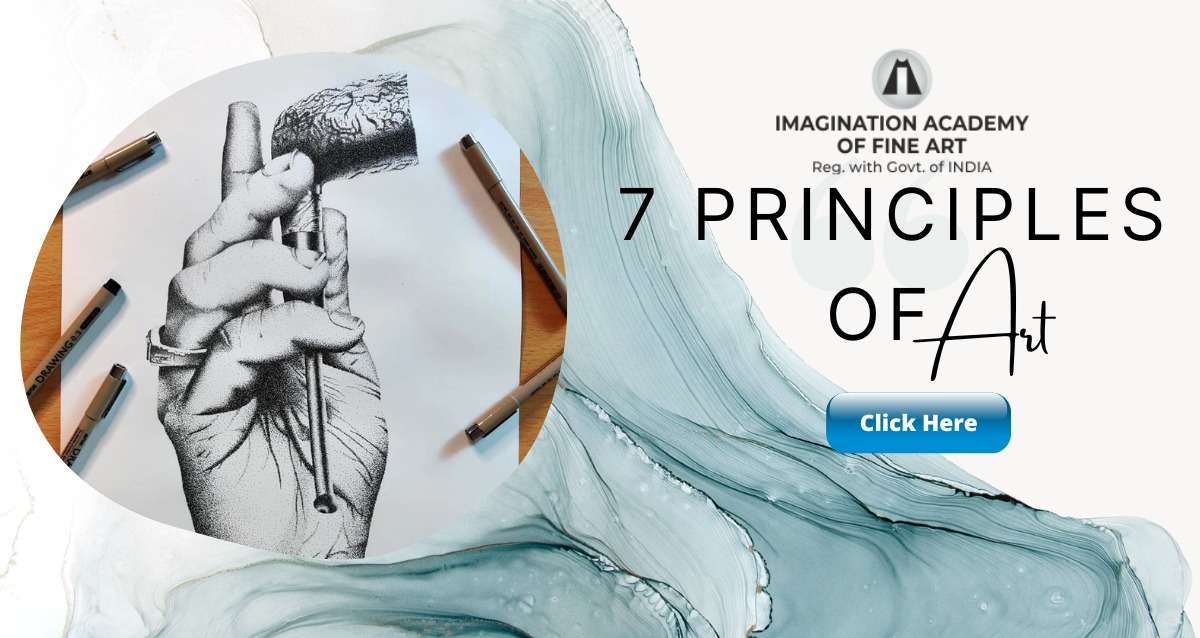Have you ever pondered upon the thought of what makes a painting come together? Whether you are looking at a Renaissance classic like the Mona Lisa or an Impressionist Water Lilies by Claude Monet, you will be met with a visual composition of a scene or figure that is a blend of creative components and concepts.
As the best fine art institute in Dehradun, we believe that the aspects and ideas of art and design provide the bedrock of the vocabulary we use to discuss art, thus in this blog, we’ll go through the seven principles of art and design.
Balance
The visual weight of the composition’s parts is referred to as balance. It is a sensation that the artwork is sturdy and “feels correct.”
Balance can be maintained in three ways:
• Symmetry: It is the existence of identical components on both sides of a composition, as in a mirror image, or the two sides of a face.
• Asymmetry: It occurs when the composition is balanced owing to the contrast of any of the art elements.
• Radial symmetry: It occurs when elements are distributed uniformly around a focal place, as in the spokes of a bicycle tire.
Contrast
It is the distinction between artistic components in a composition so that each part is emphasized in relation to the others. When juxtaposed, opposing aspects draw the viewer’s attention. A viewer’s attention is drawn to areas of contrast initially. Any of the aspects of art can be used to create contrast. Contrast can be seen in the negative/positive space. Contrast is created by using hues next to each other.
Emphasis
It occurs when the artist produces a visually strong region of the composition that commands the viewer’s attention. This is frequently accomplished through contrast.
Movement
It is the effect of employing art components to move the viewer’s attention around and inside the image. A sensation of movement may be generated through diagonal or curving lines, whether actual or inferred, edges, the illusion of space, repetition, and active mark-making.
Pattern
It is the consistent repeating of any of the components of art or their combinations. Through repetition, anything may become a pattern. Traditional patterns include spirals, grids, and weaves.
Rhythm
It is developed by movement indicated by the non-uniform yet ordered repetition of art pieces. It is connected to musical rhythm. Unlike pattern, which requires consistency, rhythm is dependent on variation.
Unity/Variety
You want your picture to seem cohesive, with all of the parts fitting together nicely. Too much unity leads to dullness, while too much variety leads to disorder. You require both. You want regions of interest in your composition as well as spaces for your eye to rest.
If this article has been a helpful refresher in the very best of ways, then you know you’re ready to take the next step in your artistic path. Use these principles in your next piece of work and make it your finest work—something you’re proud of.
If you’re new to art, Imagination Academy of Fine Arts can provide you with the best painting classes in Dehradun.
Enroll yourself at the best fine art institute in Dehradun and learn from the best art teachers by working directly with them and mastering the talent of painting.




